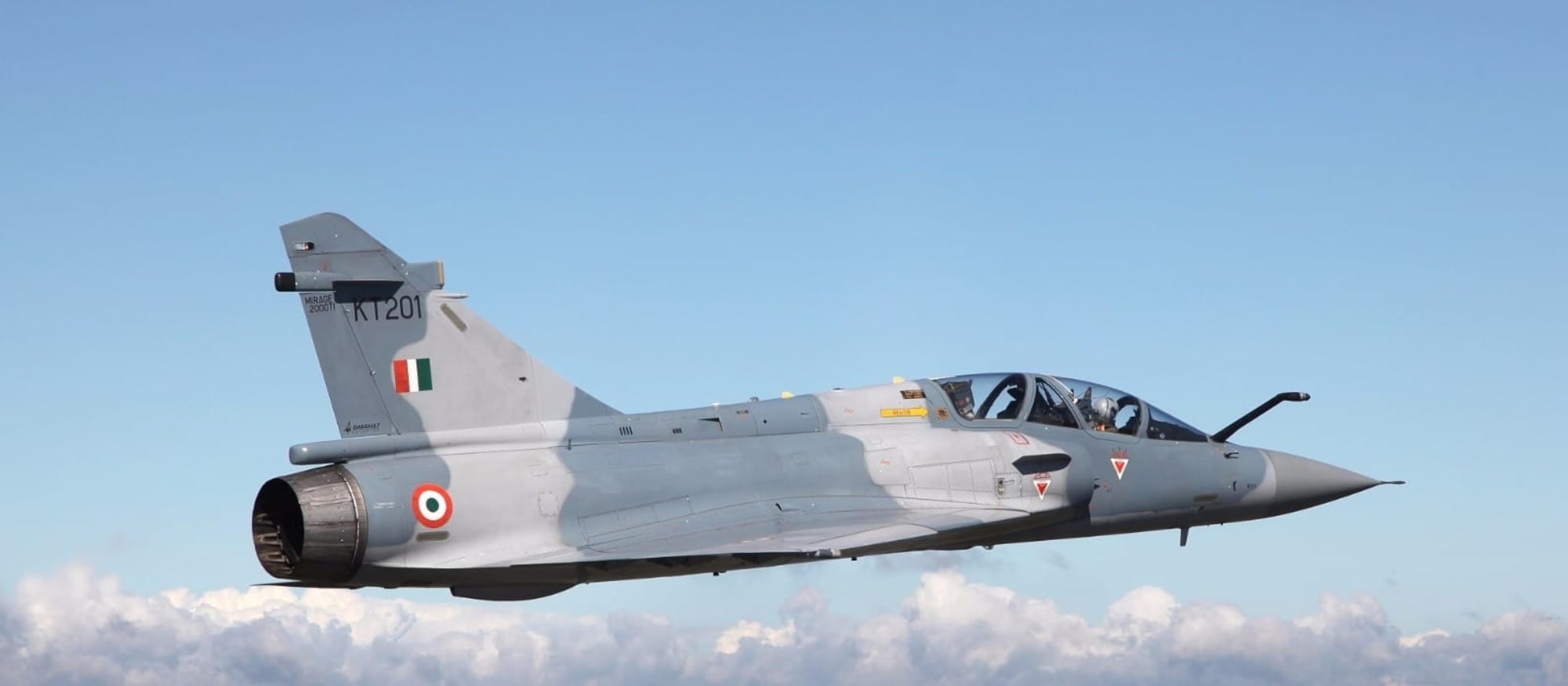SOURCE: AFI

The Indian Air Force (IAF) operates a fleet of 45 Mirage-2000H/TH fighters, which remain a critical component of its combat capabilities despite their age. Acquired in the 1980s, these versatile 4th-generation jets are set to serve for another 15 years, with a planned retirement around 2040 following a mid-life upgrade completed in 2015.
However, the Mirage-2000’s primary beyond-visual-range air-to-air missile (BVRAAM), the MBDA MICA, is increasingly outdated compared to modern adversaries’ weaponry, such as China’s PL-15 and Pakistan’s AIM-120C-7. To maintain the fleet’s combat edge, the IAF should integrate the indigenous Astra Mk1 BVRAAM, developed by the Defence Research and Development Organisation (DRDO). This upgrade, feasible locally given Dassault’s reluctance to support integration and its push for the MICA-NG, aligns with India’s Atmanirbhar Bharat initiative and ensures the Mirage-2000 remains a potent platform against evolving threats.
The Mirage-2000, operated by the IAF’s No. 1 (“Tigers”), No. 7 (“Battle Axes”), and No. 9 (“Wolfpack”) squadrons at Gwalior, is a multirole fighter valued for its agility, reliability, and combat-proven performance, notably during the 1999 Kargil War. The 2011-15 upgrade, costing ?17,547 crore ($2.4 billion), equipped the fleet with advanced avionics, including a Thales RDY-2 radar, glass cockpit, electronic warfare suite, and compatibility with modern weapons like the Spice-2000 and Crystal Maze missiles. The upgraded Mirage-2000 can carry up to 6.3 tons of ordnance and engage targets at ranges up to 150 km with the MICA missile.
However, the MICA (Missile d’Interception, de Combat et d’Autodéfense), introduced in the 1990s, is showing its age. Available in infrared (MICA-IR) and radar-guided (MICA-RF) variants, it has a range of 60-80 km and a speed of Mach 4, but lacks the advanced features of newer BVRAAMs. For comparison, China’s PL-15, deployed on J-20 and J-16 fighters, boasts a 200-250 km range, dual-pulse motor, and active electronically scanned array (AESA) seeker, while Pakistan’s AIM-120C-7 (AMRAAM), used on F-16s, offers a 100-120 km range. The MICA’s shorter range and older seeker technology put the Mirage-2000 at a disadvantage in beyond-visual-range (BVR) combat, especially against Pakistan’s potential J-35A stealth fighters by 2028-30 or China’s growing J-20 fleet (200 units as of 2025).
With the IAF planning to operate the Mirage-2000 until 2040, upgrading its BVR capability is critical. The fleet’s small size (down from 51 due to attrition) and the IAF’s current strength of 31 squadrons (against a sanctioned 42) underscore the need to maximize existing assets, especially as new platforms like the Tejas Mk2 and AMCA face delays until 2032-35.
The Case for Astra Mk1 Integration
The Astra Mk1, India’s first indigenous BVRAAM, is an ideal candidate to replace the MICA. Developed by DRDO and produced by Bharat Dynamics Limited (BDL), the Astra Mk1 has been successfully integrated on the Su-30 MKI and Tejas Mk1, with over 50 test firings proving its reliability. Key features include:
- Performance: The Astra Mk1 has a range of 90-110 km, a speed of Mach 4.5, and a smokeless solid-fuel ramjet motor, enabling high maneuverability with 40g capability. Its active radar seeker and mid-course guidance via data link allow precise targeting, even against agile fighters.
- Compatibility: Designed for Indian platforms, the Astra Mk1 integrates seamlessly with Russian and Indian avionics, as demonstrated on the Su-30 MKI’s Bars radar and Tejas’s Uttam AESA radar. The Mirage-2000’s RDY-2 radar, with a 130-150 km detection range, is technically compatible, requiring only software updates and interface modifications.
- Cost-Effectiveness: Priced at ?2-3 crore ($250,000-$400,000) per missile, the Astra Mk1 is significantly cheaper than the MICA (?6-8 crore) or MICA-NG (?10-12 crore). For a fleet of 45 Mirage-2000s, equipping each with 4-6 missiles (180-270 units) would cost ?360-810 crore, a fraction of acquiring new fighters or foreign missiles.
- Indigenous Ecosystem: The Astra Mk1 supports India’s self-reliance goals, with over 50 Indian firms, including MSMEs, involved in its production. Local integration reduces dependence on foreign suppliers and ensures uninterrupted supply chains, critical in wartime.
The Astra Mk1’s performance matches or exceeds the MICA, offering a 30-40% range advantage and modern seeker technology. Its successor, the Astra Mk2 (160-190 km range), is under development for 2026-28, but the Mk1 is production-ready, with 200 units already ordered for the Su-30 and Tejas fleets. Integrating it on the Mirage-2000 would standardize BVR weaponry across IAF platforms, simplifying logistics and training.
Dassault Aviation, the Mirage-2000’s manufacturer, is reportedly unwilling to support Astra Mk1 integration on the IAF’s older fleet, citing technical complexities and commercial interests. Instead, Dassault is promoting the MICA-NG (Nouvelle Génération), an upgraded BVRAAM under development for France’s Rafale and Mirage-2000-5 fleets, with induction planned for 2026.
Dassault’s focus on MICA-NG sales aligns with its strategy to sustain the Mirage-2000’s export market, particularly for operators like the UAE and Greece. However, for India, the MICA-NG’s marginal performance edge over the Astra Mk1 does not justify its cost or strategic trade-offs.
The integration, estimated at ?200-300 crore for the fleet, could be completed in 2-3 years, aligning with the Mirage-2000’s operational timeline. HAL’s Mirage Upgrade Facility in Bengaluru, established for the 2015 refit, is well-equipped to execute this project, with support from DRDO’s missile division and BEL for avionics.
The IAF faces a two-front challenge: China’s PLAAF, with 2,000 combat aircraft, including 200 J-20s and J-35s under development, and Pakistan’s PAF, with 450 aircraft and plans for J-35As. The Mirage-2000, deployed during the 2020 Galwan crisis and Balakot strikes, remains a frontline asset. Without a BVR upgrade, its effectiveness against modern threats will diminish, weakening India’s deterrence. The Astra Mk1, already operational and scalable to Mk2 (160 km range by 2028), ensures the Mirage-2000 remains relevant until the AMCA’s induction.
NOTE: AFI is a proud outsourced content creator partner of IDRW.ORG. All content created by AFI is the sole property of AFI and is protected by copyright. AFI takes copyright infringement seriously and will pursue all legal options available to protect its content.